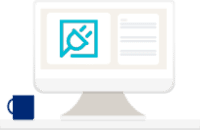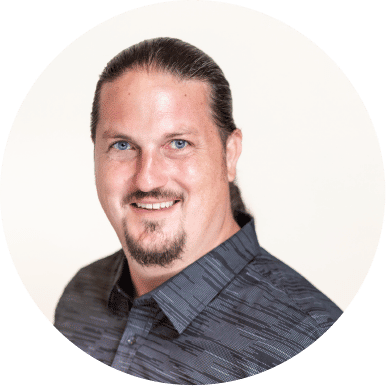People are the heart of your business. Good employees are the driving force behind innovation, productivity, and ultimately, your organization’s success.
But in recent years, employees’ expectations have changed, and employee retention has become an even bigger challenge for employers. Turnover is an expensive and frustrating problem and over time, could be the reason a business fails.
However, making the effort to foster a positive culture and listening to your employees needs can make you a better workplace, with a loyal workforce. If you’re ready to commit to retaining your team, we can help. We’re sharing our 10 best employee retention strategies:
Table of Contents
-
Hire the right people who share your core values.
-
Create a strong first impression with a good onboarding experience.
-
Invest in enticing benefits.
-
Be generous with recognition and appreciation.
-
Give employees a sense of purpose in their work.
-
Invest in employee development.
-
Nurture social relationships among employees.
-
Create transparent and equitable policies around hiring, pay, promotions, and terminations.
-
Provide frequent feedback to help employees improve and grow.
-
Conduct surveys to collect employee feedback.
The cost of employee turnover
The cost of employee turnover can be high, and not just financially. It’s true, the cost of replacing an individual employee can range from one-half to two times the employee’s annual salary. But other unseen costs include:
- Opportunity costs — How much could your business have grown if you kept your team together?
- Culture costs — How will the departure of good employees impact the rest of the team? When you lose employees who make positive contributions to your culture, what happens to your culture when they take those contributions elsewhere?
As a small business owner, any time you spend on recruiting, hiring, and onboarding is time you could have spent on running your business instead.
10 Employee retention strategies that work
Turnover is something that employers have the power to control. In our Toxic Work Environment Report, we found that 84% of employees that were planning to leave their jobs, would stay at their current jobs if their employers made positive changes to the workplace.
So what changes can you make?
Here are our top ten strategies for creating a workplace with high employee retention.
1. Hire the right people who share your core values.
Employee retention starts as early as recruitment. To build a loyal workforce, you need to hire the right people that share your core values and are invested in your company’s growth.
Take the time to develop a structured hiring process you can count on to produce the right hires every time. It’s time (and money) you’ll save on the backend. Develop specific interview questions for each core value and devote a section of the interview to it. Get multiple stakeholders and peers involved, so you have different perspectives.
It can also be helpful to create an Ideal Candidate Profile before you ever post your open job online. This serves as a guide for hiring managers to determine who the potential right person could be for the role.
For more advice on how to create an Ideal Candidate Profile, check out this video featuring CareerPlug’s Director of HR, Natalie Morgan.
2. Create a strong first impression with a good onboarding experience.
Strong onboarding is essential for employee retention. 69% of employees are more likely to stay with a company for at least 3 years after a great onboarding experience.
Onboarding is the time to make employees feel welcomed and prepared. During this time, new employees learn about the role and their responsibilities, get a feel for the company’s culture and work environment, and meet the managers and coworkers that they’ll be working with.
Here are some tips to improve your onboarding process:
- Send new hire paperwork through a digital platform, so employees can easily complete it quickly and securely.
- Ensure new hire training is thorough and set clear expectations about what new employees are required to learn.
- Set reachable goals for your new hire to work toward in the first 90 days. We recommend including a variety of goals, like learning, performance, personal, and growth goals. Supporting new employees while they reach these milestones can help keep them engaged during the crucial first months of their employment.
3. Invest in enticing benefits.
Benefits can be your secret weapon when it comes to a compelling compensation package.
Plus, offering your team benefits says more about your commitment to being a great place to work than a raise ever will. And they are an excellent retention tool: People will think twice before giving up their benefits. Think of benefits as an investment in your growth
Our data backs this up. In our Compensation Expectations Report, we found that the majority of employees were willing to accept benefits over a pay increase – even those who were unsatisfied with their current pay.
But what if your business is in a tight place financially?
All benefits don’t have to be expensive like healthcare or 401k. For example, flexibility and remote working options are the type of perks that a lot of people value right now.
A lot of times, there isn’t even one thing that keeps people at your company. But if you have enough small benefits, they end up being more than the sum of their parts — they’re the signals to employees that they’re valued, they’re treated well, and the business has made a commitment to caring about its people.
4. Be generous with recognition and appreciation.
According to a Gallup study:
- Only 30% of employees say that they’ve received recognition or praise for doing good work within the past week.
- Employees who do not feel adequately recognized are twice as likely to say they’ll quit in the next year.
Verbalized, consistent, and concrete recognition can help employees feel valued. One of the biggest mistakes business owners make is when they take current employees for granted, especially their top performers.
Upgrading to formal employee recognition programs can also be an effective way to keep employees engaged and performing at a high level.
5. Give employees a sense of purpose in their work.
The Gallup study we mentioned earlier also found that when employees have a sense of purpose in their work, their engagement skyrockets. Workers can link their individual goals to the organization’s goals were 3.5 times more likely to be engaged.
You can put your business at a significant advantage in terms of retention if you’re able to connect people’s work with a greater purpose.
Lead with empathy by imagining and answering the kinds of questions people have about purpose:
- Is this going to be challenging work?
- Is this a team I’m going to like to work with?
- Do I like my boss?
- Do I feel good about the impact that we’re making, both for our clients and for the community?
Spend time figuring out how to give each role on each team the 3 things that drive intrinsic motivation:
- Purpose — Articulate a clear basis for how their work contributes to the company’s purpose.
- Autonomy — Give them their own space to perform and innovate without micromanaging. What parts of the process do they have ownership of?
- Mastery — Ensure they feel like they’re honing their craft and growing.
When people are intrinsically motivated to perform, they’re more engaged in their work and will think twice before leaving your company for the uncertainty of another organization.
6. Invest in employee development.
We found that a lack of opportunities for growth was the number one reason employees would want to quit their jobs. And there’s similar data to back this up: 86% of professionals reported that they would change jobs if a new company offered better professional development opportunities.
Investing in employee development shows that you care about their growth and their career. This can help you create a loyal, engaged workforce.
One important thing to note: make sure not to confuse employee training and employee development. Employee training is focused on the short-term instruction that enables a person to perform the logistics of their job.
Employee development, on the other hand, focuses on long-term growth. These are skills that employees will be able to carry with them throughout their careers and personal lives, such as leadership skills and soft skills. A growing body of research suggests that this kind of whole-person development is crucial to maintaining high employee engagement and long-term retention.
This is where a growth plan can be helpful. Using a growth plan, employees can take a little time to think about the skills they have and the ones they’d like to develop. They can think about both personal and professional dreams that they have and find more clarity on how they can reach them.
This has been a great tool for supporting employee development that we use at CareerPlug. Click the button below to download your free Growth Plan Template.
7. Nurture social relationships between employees.
Positive social connections at work are important for employee retention. Research shows that supportive interactions, feelings of inclusion, and effective collaboration enhance employee wellbeing and can serve as a buffer against workplace stress. Positive working relationships are also beneficial to the company as a whole and can improve productivity and decrease absenteeism.
This can even be done in a remote environment! At the beginning of CareerPlug team meetings, managers encourage their team to “share something good.” People take turns sharing a good thing that’s happened in their lives that week, either personally or professionally. It’s a great way for people to continue to get to know one another and build empathy and camaraderie.
We also have an all-team meeting Friday afternoons where people can give their peers shoutouts for things they did during the week. We also make a big deal about people’s work anniversaries (or ‘workiversaries’) with us.
You can encourage good relationships among your employees by scheduling social events and “team building” opportunities. Happy hours, company outings, and team lunches can all be easy ways to get your team together outside of work to decompress, get to know each other, and form lasting friendships.
8. Create transparent and equitable policies around hiring, pay, promotions, and terminations.
HR shouldn’t be a mysterious, secretive entity. Employees should be able to trust that leadership is being forthcoming with information at all times.
CareerPlug CEO, Clint Smith explains how we practice transparency from the very beginning of an employee’s tenure: “At CareerPlug, that starts at the very beginning of our relationship with all our employees in our hiring process. We take an open and straightforward approach with compensation. We start by listing compensation on every job posting. Then we share the exact compensation with every candidate on the phone screen and confirm that this works for them, as we don’t negotiate.”
“This helps us be more equitable and ensures that there are no surprises when we get to the offer stage. The candidate knows exactly what they’ll see on the offer letter. Candidates really appreciate it, and it helps us convert almost every offer we make into a hire,” he added.
Kicking off someone’s employment with transparency goes a long way. Continue to be open and honest throughout their tenure with clear and available information around promotion tracks, bonus eligibility, and the organization’s compensation structure.
9. Provide frequent feedback to help employees improve and grow.
Frequent feedback helps keep employees engaged and motivated, and can make them feel like you’re invested in their growth – all important for employee retention. However, providing feedback to employees isn’t always easy.
Try to make feedback specific and tie it to the behavior or impact the behavior had. This works for both positive and constructive feedback – and yes, you should be giving both. Positive feedback helps employees understand how impactful their work is, and lets them know when they’re on the right track. Constructive feedback helps employees grow, and opens the door to coaching and learning opportunities.
Fortunately, the more you provide positive feedback to employees, the less you’ll have to provide constructive feedback. And getting into the habit of providing feedback at regular, scheduled intervals and on the fly is crucial for retaining your team.
10. Conduct surveys to collect employee feedback.
In addition to giving feedback to employees, it’s also important to give them opportunities to provide feedback as well. Create open channels so that you can receive feedback. Ask people how you are doing and what you can do to improve. If you never get any constructive feedback, then you have not built enough trust with your team. You need their feedback to grow.
CareerPlug is currently working on a new feature called Pulse, where employers can easily send out engagement surveys on a regular basis to their team. Insights can help employers evaluate employee wellbeing, increase engagement, and reduce turnover.
Collecting employee data in a regular way is also helpful for uncovering patterns within the workplace and making more informed business decisions. Hearing from employees directly is one of the most important ways you can make sure your business is doing what it takes to keep them around.
Retain your employees by being a great place to work.
Employee retention starts as early as recruitment with a positive candidate experience and strong onboarding process. From there, employees should be supported with good benefits, recognition and feedback, growth opportunities, and transparent policies. Help them feel connected to your company by nurturing social relationships among employees and giving employees a sense of purpose in their work.
See how your employee retention efforts are doing by conducting regular retention surveys and make adjustments as necessary. Making an effort to create positive changes in the workplace will have a big impact on your ability to hold onto your most valuable asset – your team.

Hire and Retain the Right People with CareerPlug
The right tools can streamline hiring, onboarding, and other key components of your employee recruitment and retention strategy. Hit the button below to learn more about our software.
GET STARTED



























